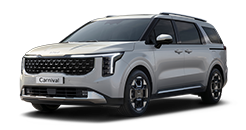open menu
- Home>
- Discover Kia>
- ASK>
- Does cruise control save gas?
Does cruise control save gas?
“Cruise control can help save on gas if used on flat road conditions that are free from traffic congestion. However, it is not recommended when driving on mountainous terrain.”
Generally speaking, yes. Cruise control can help you become more fuel-efficient and can help you save an average of 7-14% on gas thanks to its ability to maintain a continuous speed. In comparison, the constant change in acceleration and deceleration of the driver placing their foot over the pedals can eat more gas. Based on a study conducted by Natural Resources Canada, the vehicle depleted 20% more gas when the speed of the car fluctuated between 47 and 53 mph (75 to 85 kph) every 18 seconds as to calibrating the cruise control to 50 mph (80 kph). Keep in mind, cruise control is only fuel-efficient when used on flat road conditions that are free from traffic congestion or on even uphill or downhill drives. However, if you are driving on hill conditions that change perpetually or sharp inclines, it is recommended to deactivate the cruise control function. Supposedly, high-quality cruise control systems should be able to handle sudden hills, but bear in mind the outcome differs vehicle by vehicle. Ultimately, the biggest advantage of using cruise control is its ability to lessen the feeling of fatigue of the driver during long-distance driving, while maintaining fuel-efficiency by eliminating unnecessary acceleration and deceleration.
Although cruise control is fuel-efficient, there are many other ways to do so. Here are some additional tips to help improve your gas usage:
By gradually accelerating from 0-60 at approximately 15 seconds instead of aggressively mashing the gas pedal and speeding up within 10 seconds, test results show that you could be potentially saving up an average of 31-37% on fuel instead of seeing it wash down the drain.
2) The slower the speed, the more you save
As you may already know, most vehicles on the freeway are usually going anywhere between 75-90mph even though the speed limit is 65-70mph. But by going at such a fast speed, it is inefficient. Similar to tip #1, the slower you drive, the more cost-efficient you become and by doing so, you could be saving an average of 12-14% on fuel.
3) If you aren’t using it, turn it off
If you’re stuck in traffic and forced to stop for longer than a minute or 2, it is recommended to turn off your engine instead. With this simple step, it can help you save up to 19% on the cost of fuel.







